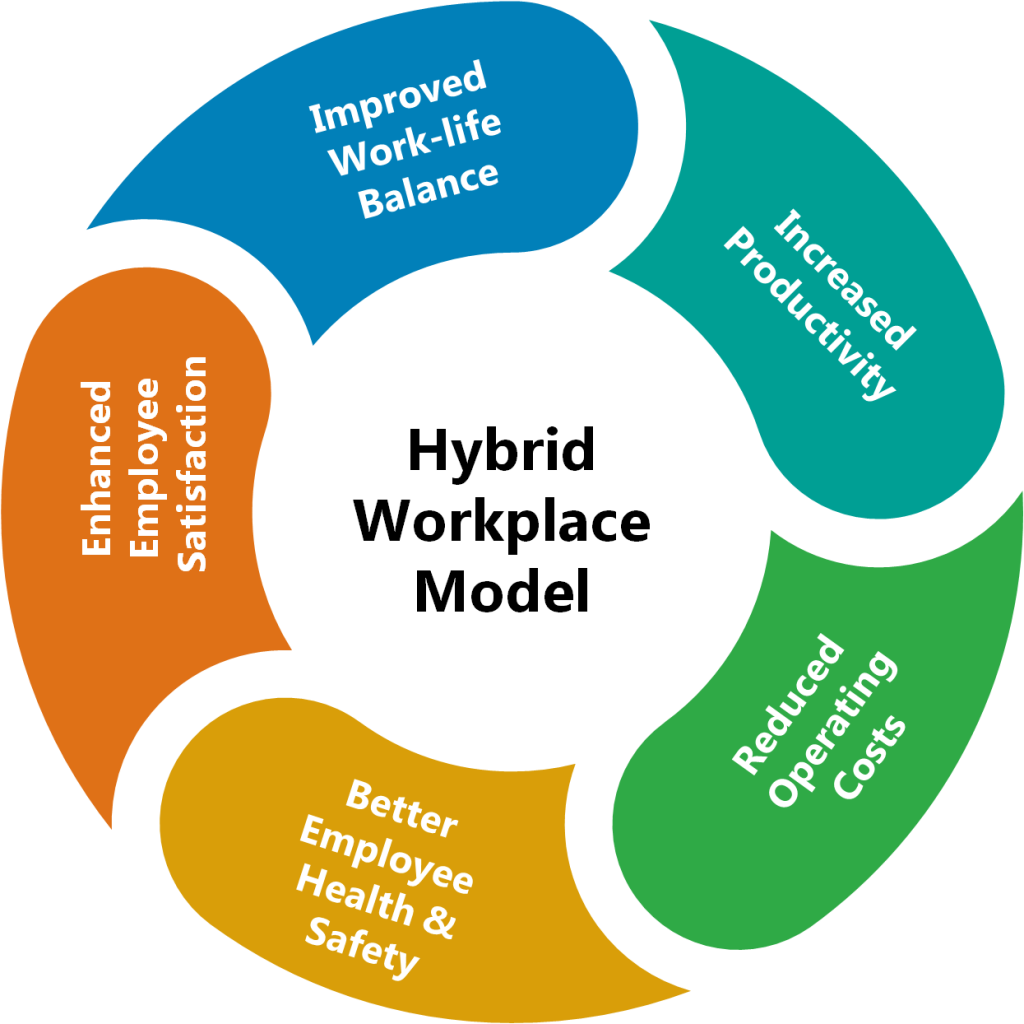In a post-pandemic world, the way we work has changed forever. One of the most significant shifts? The rise of the hybrid work model—a blend of remote and in-office work that promises flexibility for employees and cost-effectiveness for companies. But as more organizations adopt this model, one key question arises: Is this shift a blessing or a burden for business leaders?
Let’s dive deep into how hybrid work is impacting leadership, productivity, company culture, and long-term growth.
What is a Hybrid Work Model?
A hybrid work model combines both in-person and remote working. Employees may come to the office two to three times a week while working from home on other days. There are many variations—some companies let employees choose when to come in, while others have fixed office days.
The goal? To create a balance that supports employee well-being without sacrificing business outcomes.
Why Business Leaders Embraced Hybrid Work
At first glance, hybrid work seems like a win-win. Here’s why many business leaders were quick to adopt it:
1. Cost Savings
Companies can save significantly on real estate and utility costs. With fewer people in the office every day, businesses don’t need massive office spaces anymore.
2. Talent Access
Hybrid work allows companies to hire top talent from anywhere. Location is no longer a restriction, especially for roles that don’t require a daily office presence.
3. Employee Satisfaction
Studies show that many employees prefer flexibility. Happier employees mean better retention rates and improved productivity—something every business leader aims for.
The Challenges Business Leaders Can’t Ignore
However, not everything about hybrid work is smooth sailing. Business leaders are starting to feel the pressure in some critical areas:
1. Managing Teams Remotely
Leading a hybrid team requires different management skills. It’s harder to ensure accountability, give real-time feedback, or identify team issues without face-to-face interaction.
2. Communication Gaps
In hybrid environments, miscommunication can happen more easily. Leaders need to over-communicate or rely on digital tools—which can sometimes create confusion instead of clarity.
3. Culture Dilution
Company culture thrives on shared experiences. When some people are in the office and others are remote, creating a sense of unity becomes difficult. Leaders have to work extra hard to ensure no one feels left out.
4. Tech Dependence
Hybrid work relies heavily on technology. Leaders must ensure all employees have the right tools, access, and training. Tech issues can lead to lost productivity and frustration on both sides.

What Successful Business Leaders Are Doing
Some organizations have cracked the hybrid code. They’ve found ways to make it work by adjusting their strategies. Here’s how:
1. Setting Clear Guidelines
Clear policies about work hours, availability, communication tools, and office attendance help avoid confusion. Leaders are becoming more transparent and direct in their expectations.
2. Focusing on Output, Not Hours
Instead of micromanaging time, successful leaders focus on results. They give teams autonomy to work in their own way—as long as goals are met.
3. Investing in Digital Tools
Leaders are turning to tools like Slack, Zoom, Notion, and Microsoft Teams to keep the workflow smooth. They also use project management tools to track progress and deadlines.
4. Creating Inclusive Hybrid Cultures
Regular virtual meetings, online team-building games, hybrid town halls, and feedback loops are helping create a sense of belonging—even when teams are not physically together.
The Psychological Toll on Leaders
What often goes unnoticed is the mental strain on leaders themselves. Managing scattered teams, ensuring fairness, and trying to keep everyone motivated while also handling uncertainty is not easy.
Many leaders report feeling isolated and burned out. The constant need to adapt to new norms—while trying to maintain business performance—can be overwhelming.
Experts suggest that leaders also need support, mentorship, and mental health check-ins. It’s not just employees who need well-being programs—leaders do too.
So, is the hybrid work model a boon or a burden?
It’s both.
It offers tremendous opportunities: better work-life balance, lower costs, and access to global talent. But it also brings complex challenges: leadership fatigue, cultural gaps, and performance management issues.
The answer lies in how prepared leaders are to adapt and evolve. Businesses that treat hybrid work as an ongoing strategy—not a short-term fix—are more likely to succeed.
Key Takeaways for Business Leaders
- Hybrid work is here to stay – It’s not a trend but a new normal.
- Strong leadership is the backbone – Hybrid models require emotional intelligence, empathy, and adaptability from leaders.
- Build the right infrastructure – Both in terms of tools and communication systems.
- Don’t forget human connection – People-first leadership is the key to thriving in a hybrid world.
- Review and refine regularly – A hybrid model isn’t one-size-fits-all. Keep adjusting as your team and business grow.
Final Thoughts
The hybrid work model is neither a magic solution nor a complete disaster. It’s a complex reality that calls for modern leadership, open communication, and a willingness to learn.
As businesses around the world navigate this new landscape, one thing is clear: the success of hybrid work depends less on where people work and more on how they’re led.
Telegraph Sold: Will U.S. Ownership Change Its Editorial Voice?






